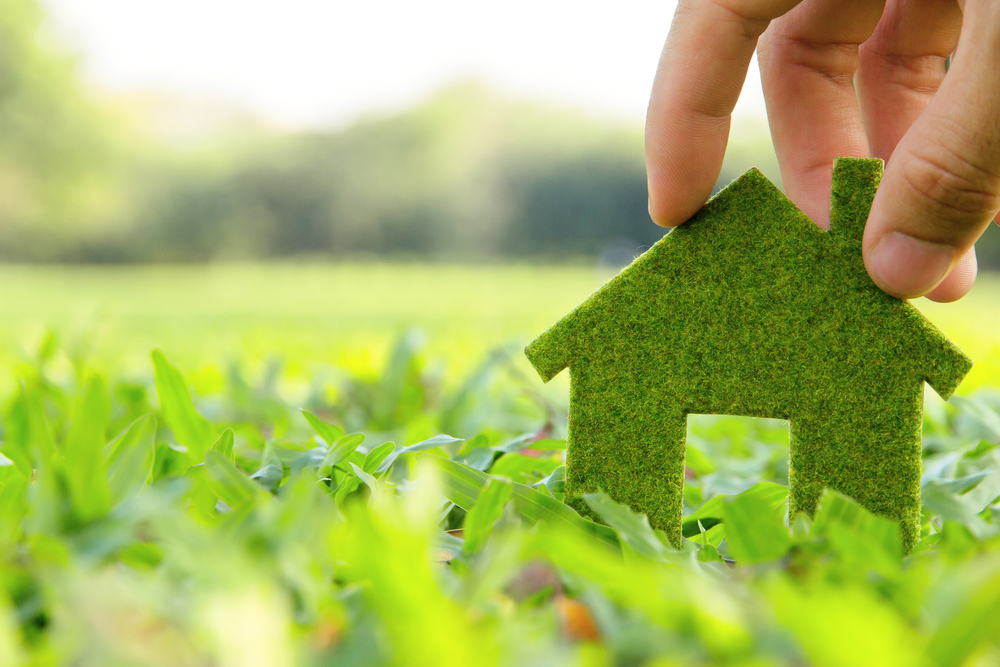Protecting our beautiful planet can sometimes seem like a very overwhelming task. Thankfully, making very small improvements to your home can help decrease your impact on the environment and as an added bonus, can even save you money. So whether you’re a first-time home owner, a renter, or have lived in the same house for decades, here are some changes you can make to achieve a more eco-friendly home.
Switch to LED.
Swapping out your incandescent light bulbs for light-emitting diode (LED) alternatives, is a great way to start making your home more eco-friendly. The variety of LED options has grown more recently, providing many hue and light temperature options suitable for any room. LEDs also last longer, saving you money in the long run.
Conserve water.
Install low-flow shower heads and aerators on your faucets to conserve water. These use about 20% less water but still maintain good pressure. And don’t forget to shut off the water when you are brushing your teeth or shaving. According to the Glen Canyon Institute, if a person leaves the water running while brushing their teeth, they use about 5 gallons of water. That’s a lot of wasted water.
Insulate your home.
Adding insulation to your home allows for your heater and A/C to work more efficiently. This can also save you substantial money on your energy bill. You may want to have a service come out and assess your current insulation and make suggestions on areas that need improvement. For instance, having your attic insulated can prevent wind drafts from entering your home and improve air quality. You can also install dual pane windows for even more protection from the outside air. More cost effective solutions are to add a stylish area rug on exposed hardwood floors to prevent air escaping through the cracks and adding some blackout curtains to shade rooms from the sun or protect from the cold glass. The more you insulate your home from all sides, the easier it is for your A/C and heater to keep the temperature desirable.
Install automated thermostats.
When we are away at work or on vacation, it’s best to have our heater or A/C turned off, or at least not working at full capacity. Installing a programmable thermostat that turns off when we leave and on an hour before we get home, can help save energy and money. There are even some products that link your thermostat, lights, and alarms to your phone so you can control all aspects of your home while you are away.
Consider solar panels.
If you are looking to make big changes to your home, you might want to invest in solar panels. Solar energy is 100% clean and converts sunlight to electricity that can power your lights, heat your water, and other energy-demanding tasks.
Start a compost bin.
All of our trash ends up in landfills and releases high levels of methane. We can decrease the amount of waste our homes produce by maintaining a compost bin. You can deposit most food waste, except for cooked food and meat, into the bin and turn it into nutritious compost for your garden or lawn, and lower methane emissions in landfills. Amazon offers a variety of outdoor and indoor compost bin options.
Use less plastic.
The phrase “reduce, reuse, and recycle” applies now more than ever. About 2 million single-use plastic bags are used every minute and the best way to bring that number down is to start with the plastic we use at home. Instead of using Ziploc bags, pack your sandwich in reusable tupperware so your lunch is waste-less. Check out these environmentally-friendly reusable wraps made with sustainable beeswax, a perfect way to transport fruit, nuts, or even jelly beans. You can also bring reusable totes (available at most grocery stores) with you on your errands so you don’t bring home any more plastic bags.
We hope this post has you given you some ideas on how to make your home more eco-friendly. Helping our environment can only be done if we do it together. Feel free to share with us the ways you are helping the environment from your home.

